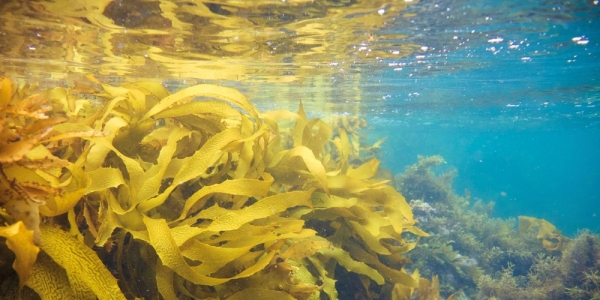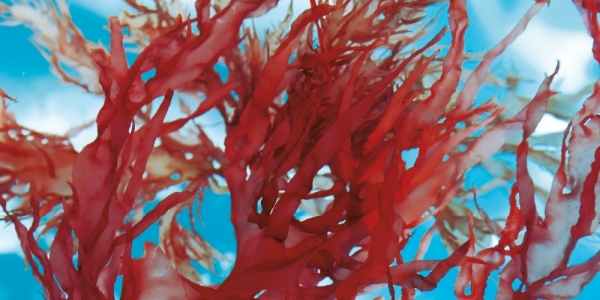Promotional Features
Marine Macroalgae: A Significant Source of Unique Cosmetic Ingredients
Marine plants, notably macroalgae, are an underexplored and vast, sustainable source of effective, natural compounds for skin health and natural beauty.
Daniel Weingart Barreto, DSc
Assessa Ltd.
Consumers of all ages (men and women) are becoming firmly entrenched in using natural, sustainable products to support their health, well-being and physical appearance. Product innovation for skin health and cosmetics can be rejuvenated by considering ingredients derived from macroalgae, which are astoundingly abundant across the globe.
Liquid water covers the surface of our planet and most of which constitute the oceans. On the other hand, the mainland covers 33% of the earth, but only 10% of that is arable.
The oceans receive 70% of the sun's rays and are responsible for regulating the planet’s climate. Photosynthesis at sea level generates 85% of the oxygen in the Earth's atmosphere, half of which comes from phytoplankton species. There are approximately 1 million known species of plant and animal life (not counting microorganisms) that inhabit the oceans, and still much of the oceanic biodiversity is unknown.
Among the known species, seaweeds have an essential role in life on this planet and represent a significant proportion of the world’s biodiversity. They are a large and diverse group of organisms that play vital ecological roles in marine communities. Seaweeds evolved from different unicellular algae but are at the base of all known terrestrial plants. They are grouped based on pigmentation and classified in three phyla: brown (Phaeophyceae), red (Rhodophyceae), and green (Chlorophyceae) seaweeds.
Seaweeds can vary enormously in size: from single-celled to large brown algae that can grow up to 50 meters in length and occupy different ecological niches throughout the planet. They are a potentially renewable source of molecules, do not require pesticides or fertilizers to grow, and do not use arable lands. Even with all this potential, seaweeds are still a relatively underused and undervalued resource. The most recent estimate reports that from approximately 73,000 species of known seaweeds, only 236 are used by man.
Due to their unique position in the plant kingdom’s evolutionary tree, macroalgae are rich sources of bioactive molecules and are able to synthesize unique molecules, characteristics that make them useful as functional ingredients in cosmetics.
Seaweeds’ Key Compounds
Red seaweeds are the primary source of sulfated polysaccharides such as carrageenans, a structural polysaccharide widely used as a food additive and a binder in the pharmaceutical industry. Additionally, to the conventional uses of carrageenan, sulfated polysaccharides belonging to the same family are excellent natural antioxidants.
Previous research has suggested that carrageenan may present potent anti-metastatic activity by blocking the interactions between cancer cells and the basement membrane, as well as inhibit tumor cell proliferation and tumor cell adhesion to various substrates.
The chemical structure of the sulfated polysaccharide will determine if it will have a potent inflammatory or an inflammatory modulating (opposite) effect. And some sulfated polysaccharides induce macrophage activation, while some appear to inhibit their functions.
In brown seaweeds, the primary structural polysaccharide is alginic acid. As its sodium salt, alginic acid is another polysaccharide widely used by the food and pharma industries. Brown seaweeds are also sources of fucoidans, a class of bioactive carbohydrates with a high-fucose polymer backbone with sulfated and acetylated groups. Fucoidans are analogous to heparin found in animals and exhibit an effect on the coagulation cascade and the potentiation of growth factor activity.
Fucoidans also demonstrated significant efficacy in inhibiting both standard and acyclovir-resistant strains of HSV-1 and HSV-2 as well as exhibiting strong immunomodulating activity. Additionally, they have been shown to have a modulatory role in various biomarkers affecting the inflammatory and immune response as well as the capacity to inhibit development of several tumors.
Beyond their unique polysaccharides, seaweeds also contain several secondary metabolites with unique chemical structures and biological activity. Among the most promising molecules are marine polyphenols because of their chemical structure and biological activity.
Seaweeds are the source of halogenated phenols and polyphenols from the phlorotannin family, structurally related to phloroglucinol. Several studies with polyphenols from different algae have shown that they are highly active as antioxidants. Brown algae polyphenols have also been shown to inhibit tyrosinase, melanin synthesis and matrix metalloproteinases (MMPs) activity.
Research Supports Cosmetic Applications
Despite this impressive set of activities and immense potential, seaweeds have been underexplored – and underutilized -- as a source of cosmetic actives. A recent unpublished study (conducted by our research group) of gene expression with polysaccharides from brown and red seaweeds of tropical origin demonstrated that they could activate the expression of more than 500 genes related to skin structure, acting on both keratinocytes and fibroblasts.
The study showed that varied combinations of red and brown seaweeds activated the expression of several genes related to keratinocyte differentiation, keratinization and keratinocyte proliferation, triggering the expression of genes linked to an up-regulation of markers involved in desmosomes, in adherents junctions, and the maintenance of skin integrity and barrier formation.
They were additionally shown to up-regulate markers – e.g., corneodesmosin, kallikrein 7, involucrin, several small proline-rich proteins, and several late cornified envelope protein – all involved in the cornified envelope. Some associations also modulate the expression of markers involved in apoptosis, leading to a reduction in cells’ premature death.
Seaweeds were also found to modulate the expression of markers involved in the inflammatory response on fibroblasts, leading to a reduction of inflammation, and to induce a down-regulation of the expression of markers involved in the inflammatory response.
Clinical studies confirmed that the combination of extracts of different species of tropical seaweeds could increase cell turnover / cellular renovation of the epidermis, removing dead cells with an uneven distribution of melanin in the skin and improving the homogeneity of skin tone. The cytokines released by activated keratinocytes can reach the dermis, improving fibroblasts’ turnover and activity, resulting in increased skin density and firmness.
The environmental conditions of the regions where the seaweeds were collected (Brazil’s northeast and southwest coasts) are rough. These seaweeds are subject to great environmental stress, high temperatures, high levels of UV radiation exposure, and dehydration, which are decisive factors for increasing their biological activity.
Seaweeds are a sustainable and environmentally friendly source of new molecules with superlative potential for cosmetics use. However, they are still poorly studied and an underexplored resource in the field of cosmetic science. Much needs to be done in this area, and thus, the opportunities for fresh, innovative skin care products are bountiful.








